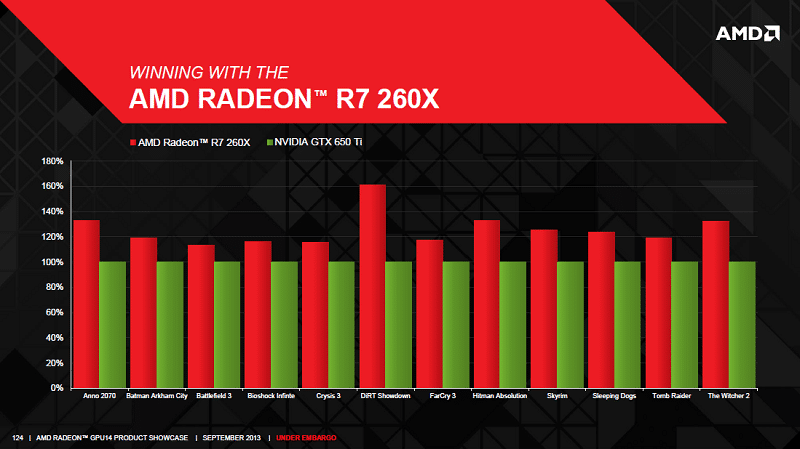AMD Radeon R9 280X, R9 270X, R7 260X, R7 250 and R7 240 Launch Details
Ryan Martin / 11 years ago
AMD R7 2XX Series
AMD’s R7 2XX series will be debuted with three cards. In ascending order of performance and price they are the R7 240, R7 250 and R7 260X.

The first card of the R7 2XX series is the AMD Radeon R7 240. With 320 stream processors this graphics card sits quite some way below the HD 7730 which has 384 cores, but the R7 240 requires less power and is really aimed at the basic media PC. AMD’s next generation flagship Kaveri APUs will probably have more GPU grunt than this GPU but this will most definitely be a modern budget option to replace the ancient HD 5450.
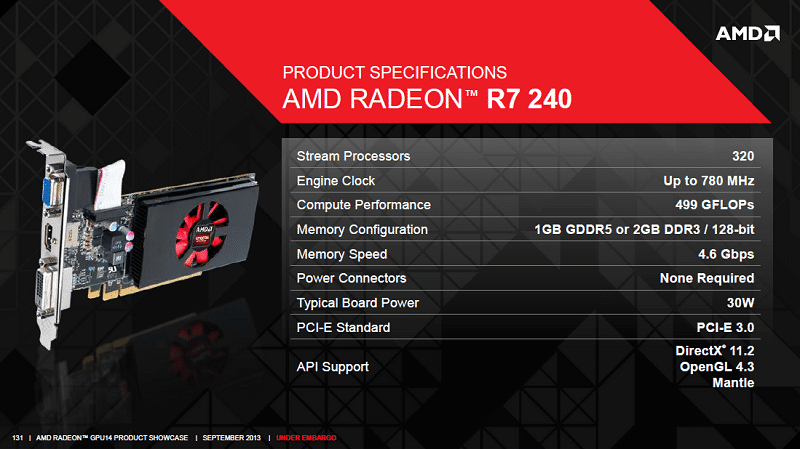
Next is the R7 250 with 384 GCN cores it replaces the HD 7730 but with a more aggressive looking shroud design. It opts for a core clock of 1050MHz which is higher than the 800MHz of the HD 7730. Of course it will be better performing than the HD 7730 but pricing is key here – with the HD 7750 available at $90 this really needs to hit the market at $80 or less to succeed.
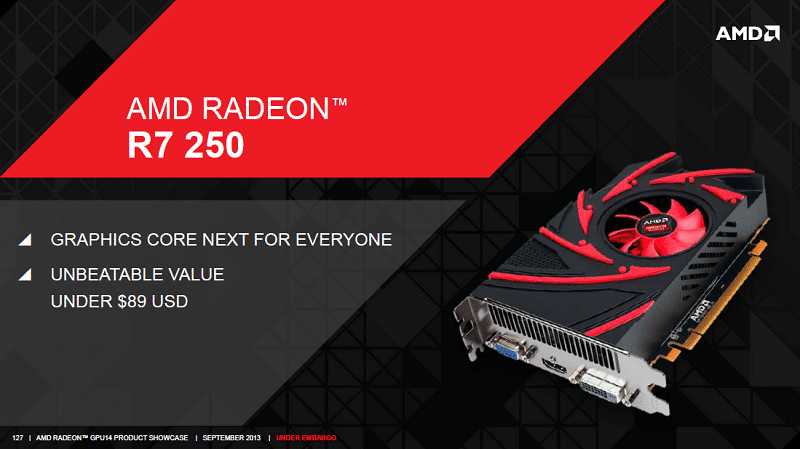
The AMD R7 250 requires no additional power and has support for all the latest APIs. 2GB DDR3 and 1GB GDDR5 versions are available.
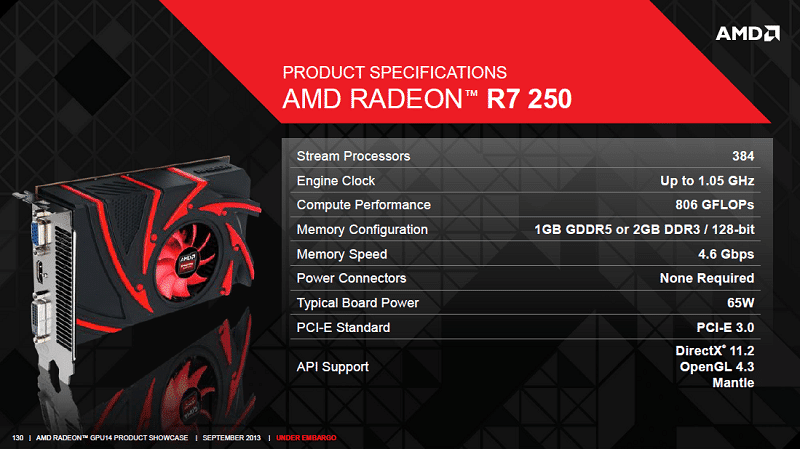
AMD claims the R7 250 is about 5% faster than the HD 5770 with a launch price of nearly half what the HD 5770 started at.
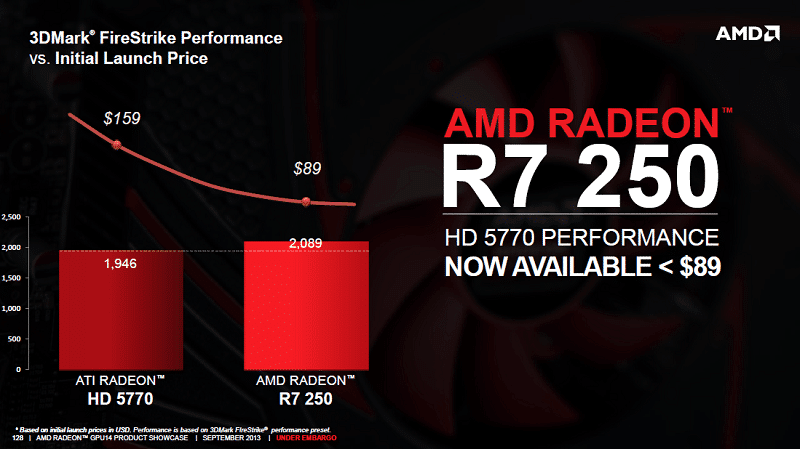
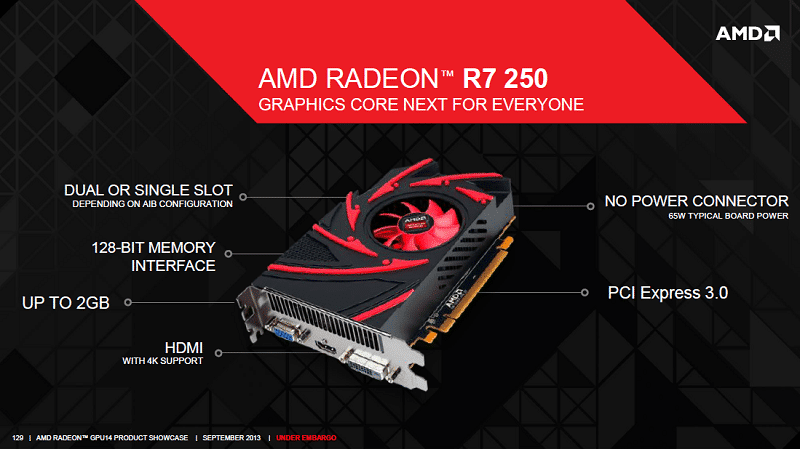
The R7 260X is based on AMD’s HD 7790 Bonaire GPU.
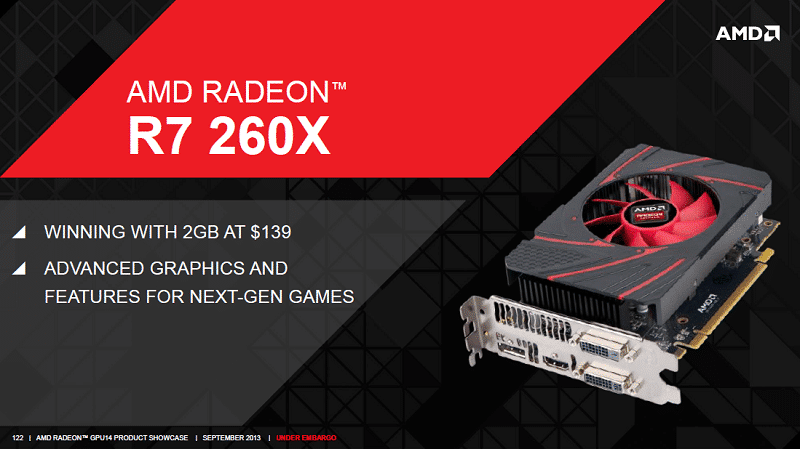
With 896 GCN cores, 2GB of GDDR5 and a 1100MHz core clock it will perform closer to a HD 7850 than a HD 7790. Though our testing shows it still isn’t capable enough to beat the similarly price GTX 650 Ti Boost. AMD board partners will need to ship aggressive overclocks with competitive pricing to make the R7 260X work. Read our detailed review here.
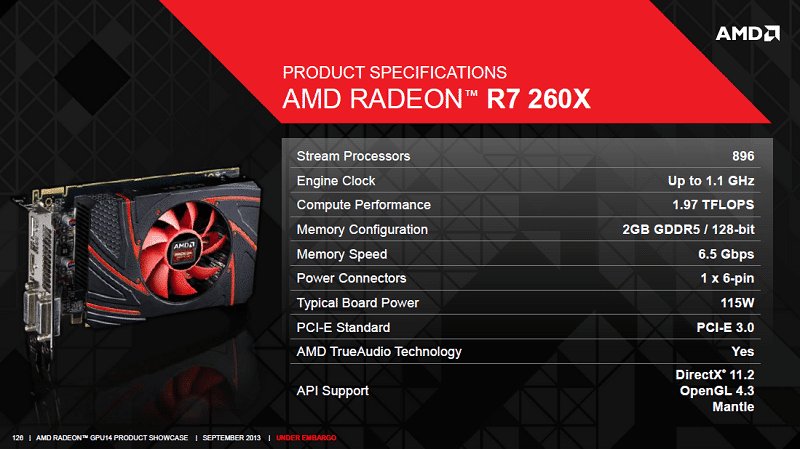
Typical performance is better than Nvidia’s GTX 650 Ti, but the GTX 650 Ti Boost does beat it in a lot of applications at the same price point.
